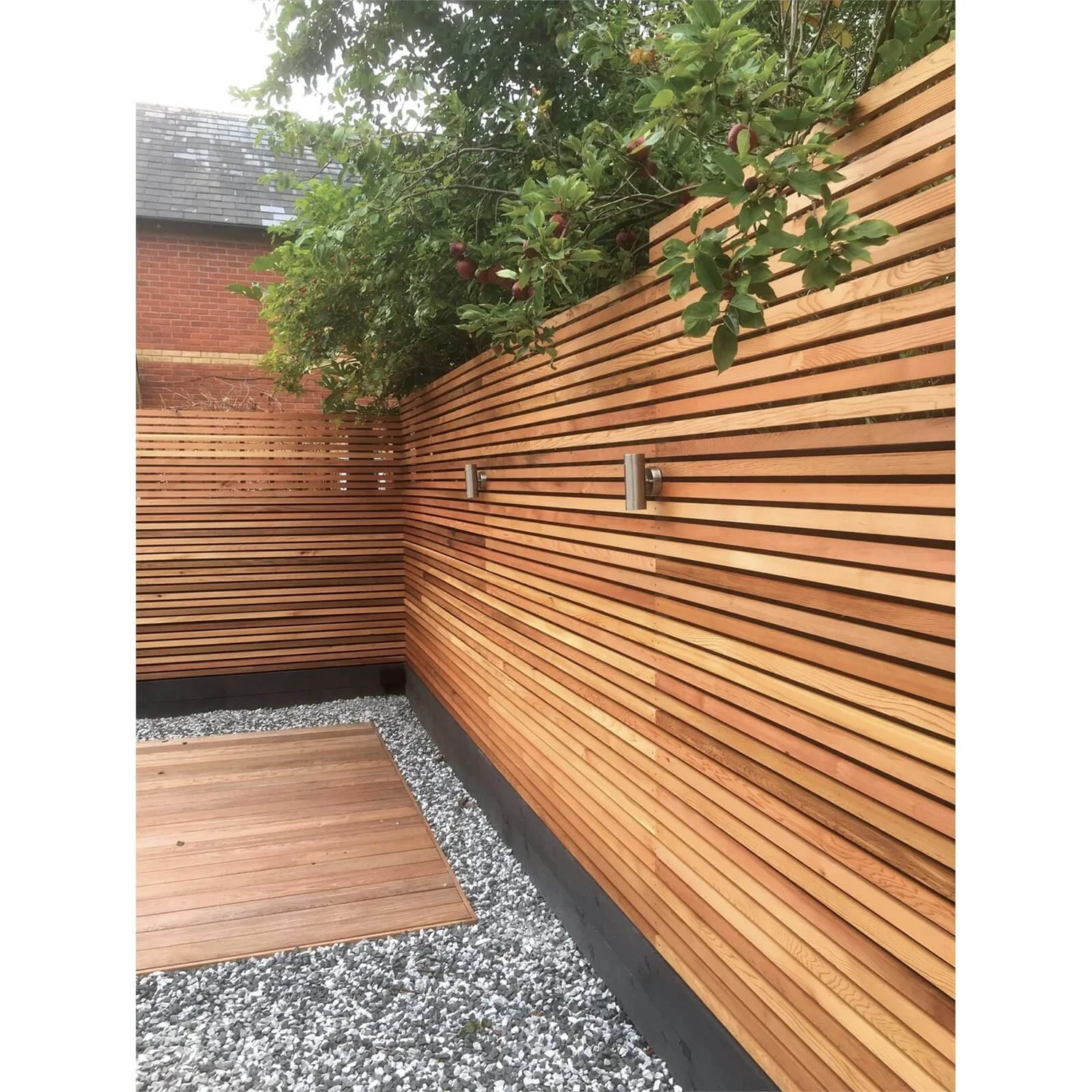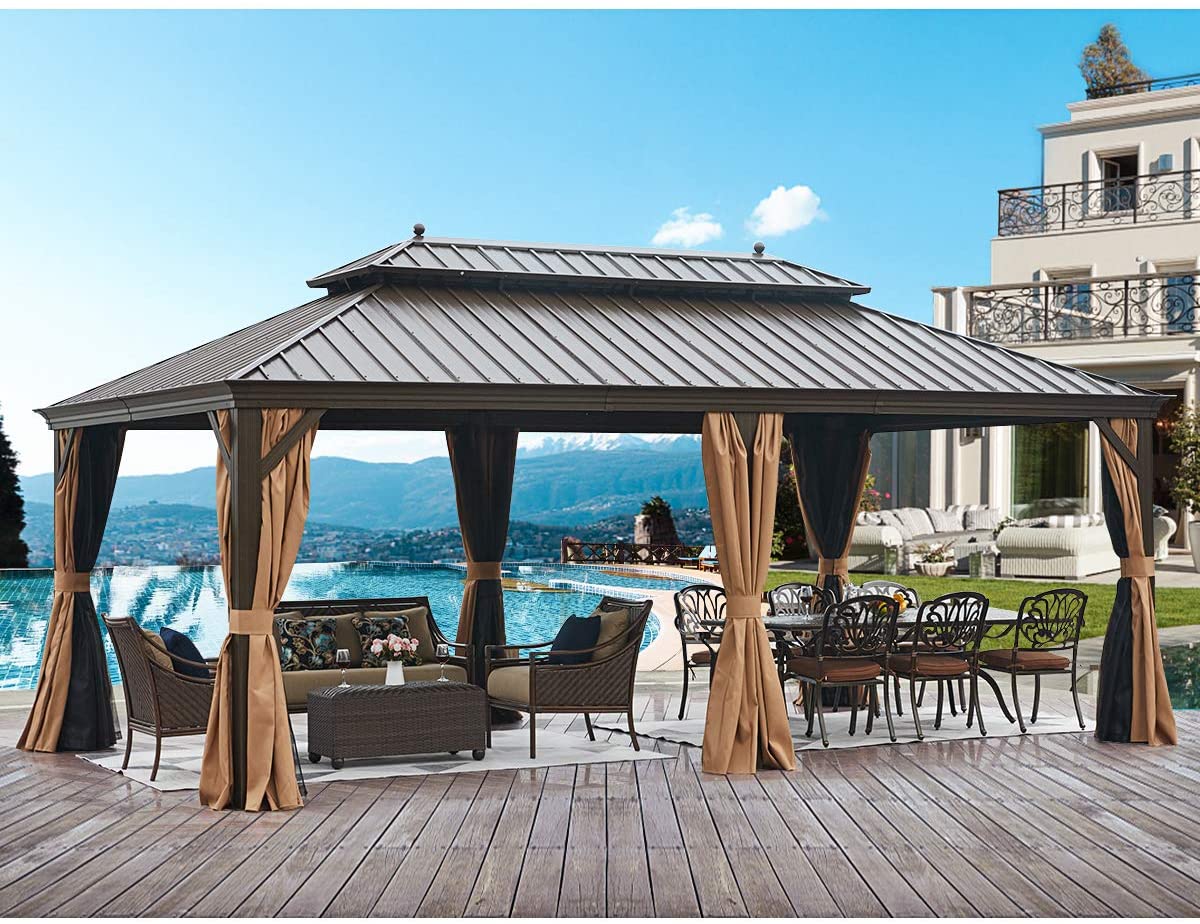Candian Western Red Cedar SertiWOOD Battens-Screen Slats Fencing (21 Pack) 1.65m2
Timber Focus SertiWOOD Canadian Western Red Cedar is a popular wood for use for cladding and landscaping applications.
Timber Focus SertiWOOD Canadian Western Red Cedar is a popular wood for use for cladding and landscaping applications. We supply premium western red cedar cladding for exterior use, including batten screen, cladding, slatted and contemporary fencing. The 18 x 38mm x 1.83 metre 21-piece pack of premium Western Red Cedar is planed with rounded edges and has a planed surface on all four sides. It is a clear-grade, slowly grown old-growth wood that is extremely durable and is, therefore, one of the best available on the market today. As a guide, You need 1.5 bundles per 6’x6′ fence.
If you decide to let the Cedar naturally weather, it will turn an attractive, silvery-grey colour. For a more contemporary look, you can choose from a modern range of wood tones, or just use an oil to sustain its golden-brown colour. For projects involving above-ground fencing and cladding, no additional treatments are needed.
If you are considering fixing cladding or fencing, we recommend Timber Cladding Stainless Steel A2 Countersunk Screws or Annular Ring Stainless Steel Nail. They are can be ordered easily from our online shop, in varying lengths depending on your requirements.
Western Red Cedar Canadian Imported Clear Wood. 18 x 38mm planed smooth with rounded corners. Natural golden-brown colour. Quick and easy to install, with multiple uses including slatted, screen, batten and contemporary fencing. Slow-grown and selected durable heartwood from the West Coast of British Columbia Canada. Can be stained or painted allow to dry or acclimatise
Available in 1.83 metre lengths. Sourced from sustainable forests and PEFC certified. Meets the UK and European Cladding Regulations CE marked to EN14915, BS1186, BS8605. Timber quality is Premium No 2 Clear and Better only Grade.
This item is delivered to you direct from one of our suppliers, please see our Terms & Conditions for more details.
- Durable
- Stable
- Lightweight
- Slow Grown Imported from West Coast Canada – NOT Homegrown or British
Additional information
| Material | Solid Wood |
|---|---|
| Product Dimensions (H)x(W)x(D) | 18 x 38 x 1830mm |
| Guarantee | A minimum 25year Service life on the durability of the wood on well maintained above ground cladding |
1 (one, unit, unity) is a number representing a single or the only entity. 1 is also a numerical digit and represents a single unit of counting or measurement. For example, a line segment of unit length is a line segment of length 1. In conventions of sign where zero is considered neither positive nor negative, 1 is the first and smallest positive integer. It is also sometimes considered the first of the infinite sequence of natural numbers, followed by 2, although by other definitions 1 is the second natural number, following 0.
The fundamental mathematical property of 1 is to be a multiplicative identity, meaning that any number multiplied by 1 equals the same number. Most if not all properties of 1 can be deduced from this. In advanced mathematics, a multiplicative identity is often denoted 1, even if it is not a number. 1 is by convention not considered a prime number; this was not universally accepted until the mid-20th century. Additionally, 1 is the smallest possible difference between two distinct natural numbers.
The unique mathematical properties of the number have led to its unique uses in other fields, ranging from science to sports. It commonly denotes the first, leading, or top thing in a group.
Twenty-one, XXI or 21 may refer to:
- 21 (number), the natural number following 20 and preceding 22
- The years 21 BC, AD 21, 1921, 2021
Fencing is a combat sport that features sword fighting. The three disciplines of modern fencing are the foil, the épée, and the sabre (also saber); each discipline uses a different kind of blade, which shares the same name, and employs its own rules. Most competitive fencers specialise in one discipline. The modern sport gained prominence near the end of the 19th century and is based on the traditional skill set of swordsmanship. The Italian school altered the historical European martial art of classical fencing, and the French school later refined that system. Scoring points in a fencing competition is done by making contact with an opponent.
The 1904 Olympics Games featured a fourth discipline of fencing known as singlestick, but it was dropped after that year and is not a part of modern fencing. Competitive fencing was one of the first sports to be featured in the Olympics and, along with athletics, cycling, swimming, and gymnastics, has been featured in every modern Olympics.
Red is the color at the long wavelength end of the visible spectrum of light, next to orange and opposite violet. It has a dominant wavelength of approximately 625–740 nanometres. It is a primary color in the RGB color model and a secondary color (made from magenta and yellow) in the CMYK color model, and is the complementary color of cyan. Reds range from the brilliant yellow-tinged scarlet and vermillion to bluish-red crimson, and vary in shade from the pale red pink to the dark red burgundy.
Red pigment made from ochre was one of the first colors used in prehistoric art. The Ancient Egyptians and Mayans colored their faces red in ceremonies; Roman generals had their bodies colored red to celebrate victories. It was also an important color in China, where it was used to color early pottery and later the gates and walls of palaces.: 60–61 In the Renaissance, the brilliant red costumes for the nobility and wealthy were dyed with kermes and cochineal. The 19th century brought the introduction of the first synthetic red dyes, which replaced the traditional dyes. Red became a symbolic color of communism and socialism; Soviet Russia adopted a red flag following the Bolshevik Revolution in 1917. The Soviet red banner would subsequently be used throughout the entire history of the Soviet Union, starting from 1922 and ending with its 1991 dissolution. China adopted its own red flag following the Chinese Communist Revolution. A red flag was also adopted by North Vietnam in 1954, and by all of Vietnam in 1975.
Since red is the color of blood, it has historically been associated with sacrifice, danger, and courage. Modern surveys in Europe and the United States show red is also the color most commonly associated with heat, activity, passion, sexuality, anger, love, and joy. In China, India, and many other Asian countries it is the color symbolizing happiness and good fortune.: 39–63






Reviews
There are no reviews yet.